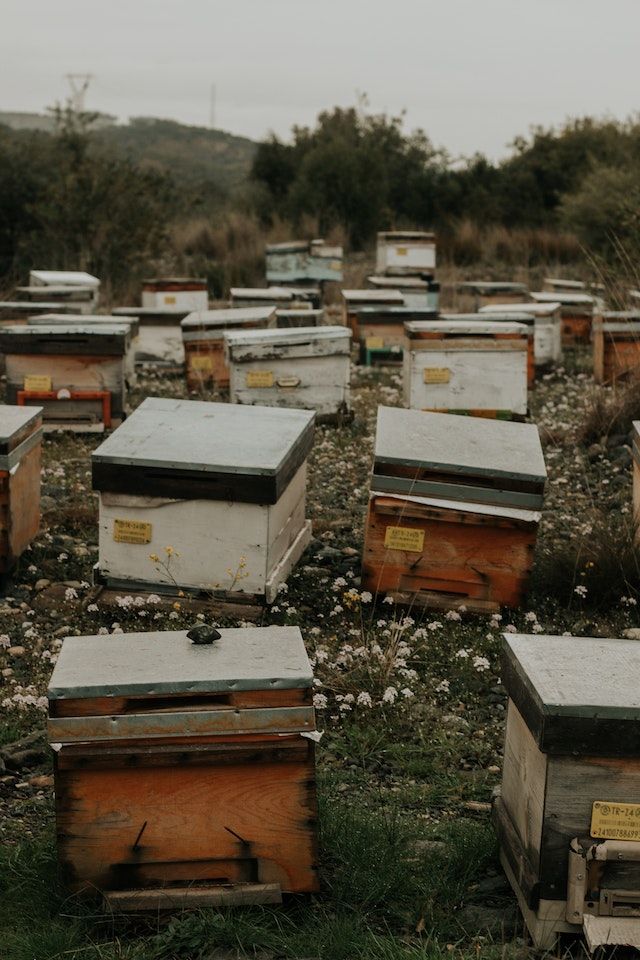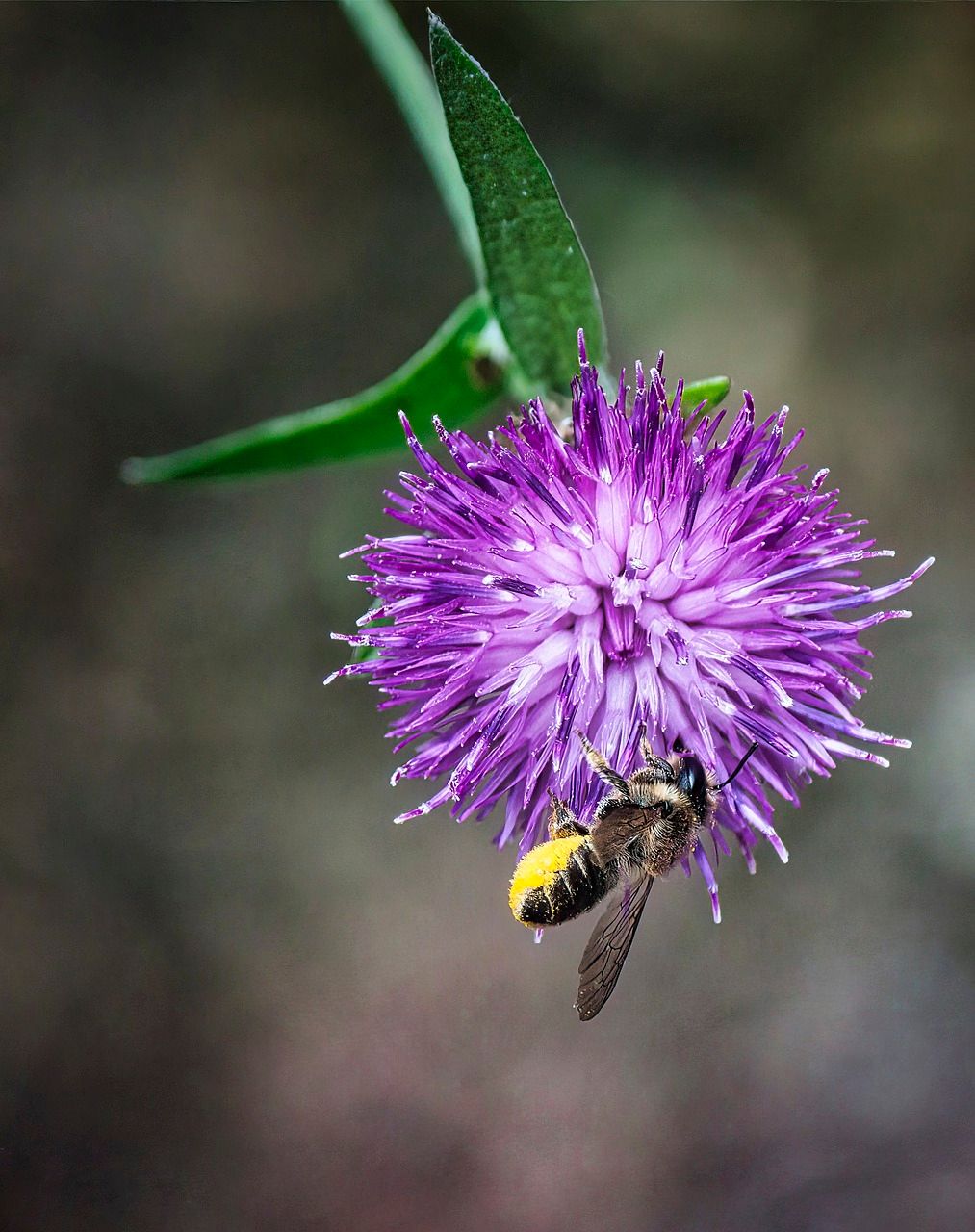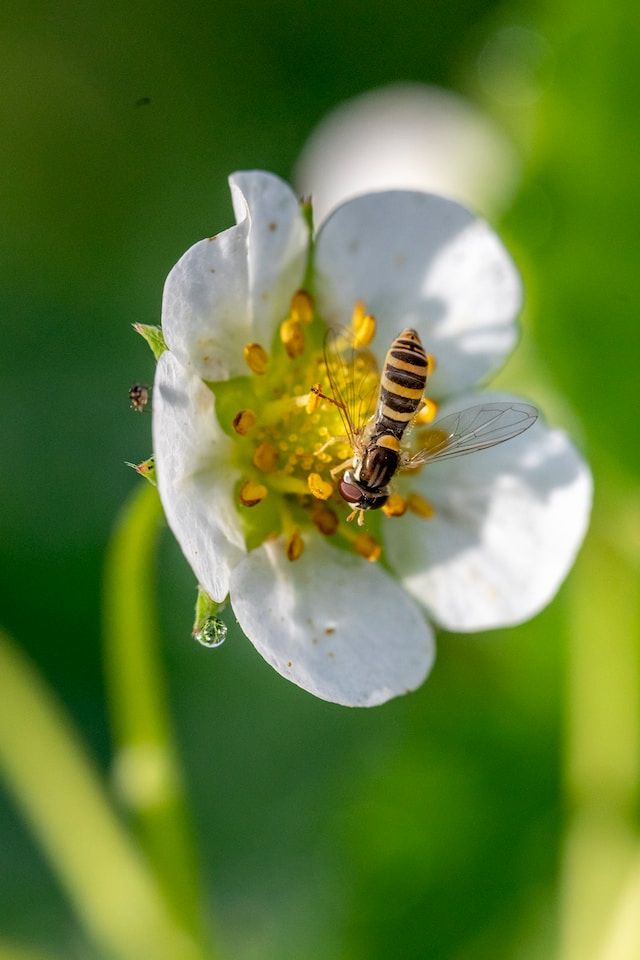The Role of Bees in Backyard Food Production: Creating a Pollinator-Friendly Garden
Dive into the fascinating world of bees and their integral role in backyard food production. Learn how to create a pollinator-friendly garden for a thriving, biodiverse ecosystem right in your backyard.

In the grand scheme of nature's cycle, every organism plays a pivotal role. Among them, bees are often overlooked, yet their contribution is nothing short of significant. They are the tiny giants of our ecosystem, the tireless workers that make our backyard gardens bloom, and the silent partners in our food production. Without them, our world would look strikingly different, and our food plate would be less diverse and colorful.
Bees are paramount to our food system, acting as essential pollinators for a wide array of fruits, vegetables, and nuts. They are responsible for every third bite of food we consume, highlighting the enormous influence they hold over our food production. However, despite their crucial role, bees are under threat, with populations dwindling due to various environmental pressures.
This article delves into the indispensable role of bees in backyard food production and how we, as gardeners and nature lovers, can create an environment that not only fosters these vital pollinators but also benefits our gardens. From understanding the importance of bees and the threats they face, to crafting a pollinator-friendly garden, let's explore how we can support these buzzing heroes and secure our food future.
The Importance of Bees in Food Production
Imagine a world without bees: it would be a place with significantly less variety and vibrancy in our food system. Bees are the world's leading pollinators, which means they help plants reproduce by transferring pollen from the male parts of a flower to the female parts. This seemingly small act has enormous repercussions for our food system, as roughly 35% of the world's crops rely on bees and other pollinators to some extent.
Bees' pollination services extend to the many fruits, vegetables, and nuts we consume daily. From the apples in our pies to the almonds in our granola, bees have a hand in their production. They pollinate coffee beans, cucumber, melons, berries, and many more, contributing to the diversity and nutrition of our diet.
Beyond direct food crops, bees also pollinate plants that form the diet of livestock. Therefore, even our meat and dairy industries indirectly rely on the services of these diligent pollinators. Moreover, bees play a crucial role in pollinating plants that create habitats for other wildlife, showcasing their influence beyond food production.
In backyard food production, bees are particularly vital. They help garden plants flourish and increase the yield of fruit and vegetable crops. Even for those not growing food, bees contribute to the health of flowering plants, helping create vibrant and lively garden spaces.
However, this symbiotic relationship between humans and bees is under threat. Habitat loss, pesticide use, climate change, and disease are all contributing factors to declining bee populations worldwide. This decline could have severe consequences for global food security and biodiversity.
Recognizing the importance of bees in our food system is the first step towards protecting them. The next is to take practical steps in our backyards and gardens to create an environment conducive to their survival and prosperity.
Types of Bees and Their Roles
While the honeybee often takes center stage in discussions about pollinators, it's essential to recognize that there are over 20,000 bee species globally, each with unique characteristics and roles in the ecosystem. Some of the most common types found in backyards and their roles are as follows:
1. Honey Bees (Apis mellifera): The most well-known species, honey bees are social insects that live in large colonies. They are prolific pollinators due to their large population size and broad diet. They pollinate a diverse range of plants and are famous for their delicious honey, which also serves as a significant food source during winter.

2. Bumblebees (Bombus spp.): Bumblebees are larger, fuzzier, and slower than honey bees. They are excellent pollinators of certain crops that honey bees cannot effectively pollinate, like tomatoes, due to a process called buzz pollination.

3. Mason Bees (Osmia spp.): Mason bees are solitary bees named after their habit of using mud to construct their nests. They are extremely efficient pollinators, with a single mason bee capable of doing the work of several honey bees.

4. Leafcutter Bees (Megachile spp.): Leafcutter bees are solitary pollinators named for their behavior of cutting neat circles out of leaves to construct their nests. They are broad-spectrum pollinators and help diversify the pollination in your garden.

5. Sweat Bees (Halictidae family): These tiny bees are often metallic in color and are attracted to human sweat. Despite their small size, they can contribute to pollination in a significant way due to their large numbers.

Each of these species has a unique role in the ecosystem and contributes to the pollination of different plants. Therefore, encouraging a diverse array of bees in your garden can ensure more efficient and diverse pollination. In the following sections, we'll discuss how you can attract and support these helpful insects in your backyard.
Threats to Bee Populations
Unfortunately, bee populations around the world are facing a crisis, with numbers dwindling at an alarming rate. Several factors contribute to this decline, and understanding these threats is key to devising effective strategies for supporting these vital pollinators in our backyards. Here are some of the primary threats to bee populations:
1. Pesticides: Many pesticides, particularly neonicotinoids, are highly toxic to bees. They can kill bees directly or have sub-lethal effects that disrupt their ability to navigate, reproduce, or resist disease.
2. Habitat Loss: Urbanization, intensive agriculture, and deforestation have resulted in the loss of wild habitats that bees rely on for nesting and foraging. A lack of diverse food sources can lead to malnutrition and increased vulnerability to disease and pesticides.
3. Climate Change: Changes in climate patterns can disrupt the synchrony between bees and the flowering plants they depend on. Extreme weather events, such as droughts and heatwaves, can also pose a direct threat to bees.
4. Diseases and Parasites: Bees are susceptible to a range of diseases and parasites, including the Varroa mite and Colony Collapse Disorder in honey bees. These issues are often exacerbated by stress from other threats.
5. Monoculture: Large-scale farming of a single crop can provide a feast for bees during the crop's flowering period, but leave them starving for the rest of the year. These monocultures also often come with increased pesticide use.
Addressing these threats to bees isn't just about saving an iconic insect; it's about preserving our food system. As gardeners, we have an opportunity to create safe havens for bees in our backyards. The next section will explore practical steps to achieve this.
Creating a Pollinator-Friendly Garden
Turning your backyard into a haven for bees and other pollinators is not only a rewarding endeavor, but it is also a critical step in bolstering local ecosystems and food production. Here are some actionable steps you can take to create a pollinator-friendly garden:
1. Plant a Variety of Flowers: Bees are attracted to a diverse array of flowers, which can provide nectar and pollen throughout the year. Select a mix of plants that bloom at different times to ensure bees have a constant food source. Native plants are often the best choice, as they're well-suited to your local climate and soil, and local bee species have co-evolved with them.
2. Avoid Pesticides: Pesticides can be harmful or even deadly to bees. Opt for organic pest management techniques whenever possible, such as companion planting, attracting beneficial insects, and manually removing pests.
3. Provide Water: Bees, like all creatures, need fresh water. Adding a birdbath or a shallow dish with stones (for landing spots) can provide a valuable water source for bees.
4. Create Nesting Sites: Different species of bees have different nesting requirements. Some species burrow in the ground, while others prefer hollow stems or holes in wood. Leave a patch of your garden undisturbed and consider installing a bee hotel to provide additional nesting options.
5. Support Local Beekeepers: If you have space and local regulations allow it, consider keeping a hive of honey bees. Alternatively, buying local honey and other hive products can support local beekeepers who are often at the forefront of bee conservation efforts.
6. Educate Yourself and Others: Learn about the bees in your area and the plants they prefer. Share your knowledge with neighbors, friends, and local schools to spread the importance of bee conservation.
Creating a pollinator-friendly garden can significantly impact the survival and prosperity of local bee populations. By taking these steps, you're not only enhancing your backyard but also contributing to global efforts to safeguard our food systems. As gardeners, we hold the future of bees in our hands. Let's ensure it's a promising one.
The Benefits of a Pollinator-Friendly Garden
A pollinator-friendly garden is not just a delight to the eyes; it's a potent tool in improving backyard food production, boosting biodiversity, and contributing to a healthier ecosystem. Here are some key benefits you can reap by making your garden a haven for bees and other pollinators:
1. Increased Crop Yield: Bees play a critical role in pollinating many of the fruits, vegetables, and nuts we consume. A well-pollinated plant produces more fruits and vegetables, enhancing your garden's productivity. Having a robust bee population in your garden can significantly increase your crop yield.
2. Improved Quality of Produce: Not only does pollination lead to more fruits and vegetables, but it also contributes to their quality and size. Well-pollinated plants produce larger and more uniform fruits, leading to higher-quality produce right from your backyard.
3. Biodiversity Boost: Bees help to maintain biodiversity by pollinating a wide variety of plants, including many wildflowers. These plants, in turn, provide habitats and food for a multitude of other creatures, creating a more balanced and biodiverse ecosystem in your garden.
4. Natural Pest Control: A diverse garden attracts a wide range of insects, including those that prey on common pests. This natural pest control can reduce the need for harmful pesticides, leading to a healthier garden.
5. Educational Opportunities: A pollinator-friendly garden is a great way to learn and teach about nature, ecosystems, and the importance of biodiversity. It's an engaging, hands-on way to connect with the natural world and understand our role in preserving it.
6. Aesthetic Appeal: A garden full of diverse, blooming plants and buzzing bees is visually appealing. It provides a place for relaxation, reflection, and enjoyment of nature's beauty.
In short, a pollinator-friendly garden is a win for everyone: the bees, the plants, and you. It's a practical way to improve your food production, contribute to local biodiversity, and create a beautiful, vibrant space to enjoy. With a bit of planning and effort, your garden can become a buzzing hub of activity and life, contributing meaningfully to the larger ecosystem.
Creating a pollinator-friendly garden is not just a step towards sustainable food production; it's an investment in the future of our planet. Bees, though small, play an enormous role in our food system and overall ecosystem, a role that is increasingly threatened by various environmental challenges. By making our gardens a sanctuary for these vital pollinators, we can contribute to their conservation and reap numerous benefits in return.
In your backyard, you have the power to create a microcosm of a sustainable, biodiverse, and productive ecosystem. It's about growing more than just food; it's about cultivating a space that supports life in its myriad forms, from the smallest bee to the largest plant. Your pollinator-friendly garden can become a testament to the beauty and resilience of nature, providing a source of nourishment, learning, and inspiration.
It's time to see our gardens as more than just a source of food or a place of beauty. They are potential lifelines for bees and other pollinators that are so critical to our survival. By taking steps to create a pollinator-friendly garden, we're not only enhancing our backyard food production but also actively participating in a global movement towards environmental stewardship and sustainability. Let's make our gardens buzz with life, for the bees, for our food, and for our planet.
